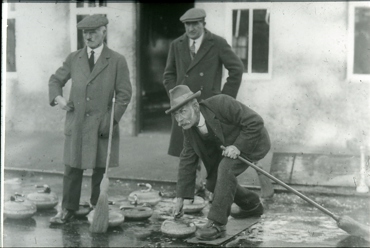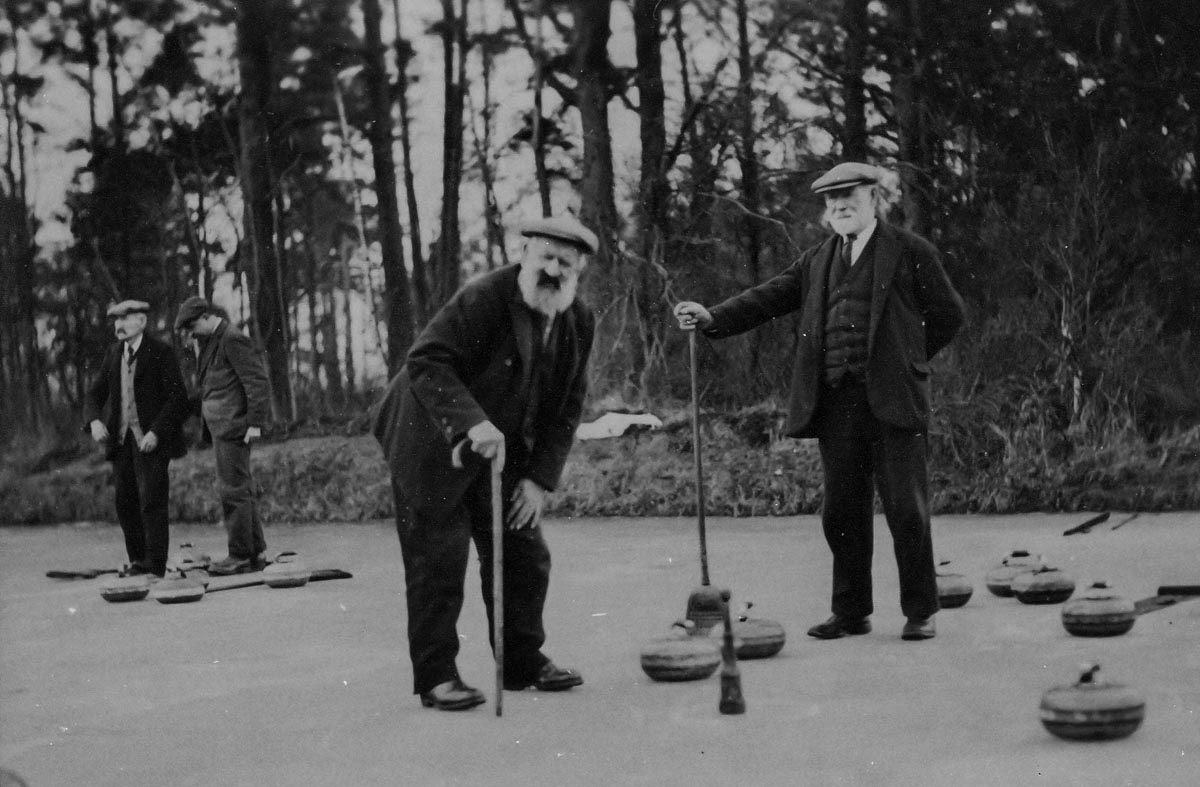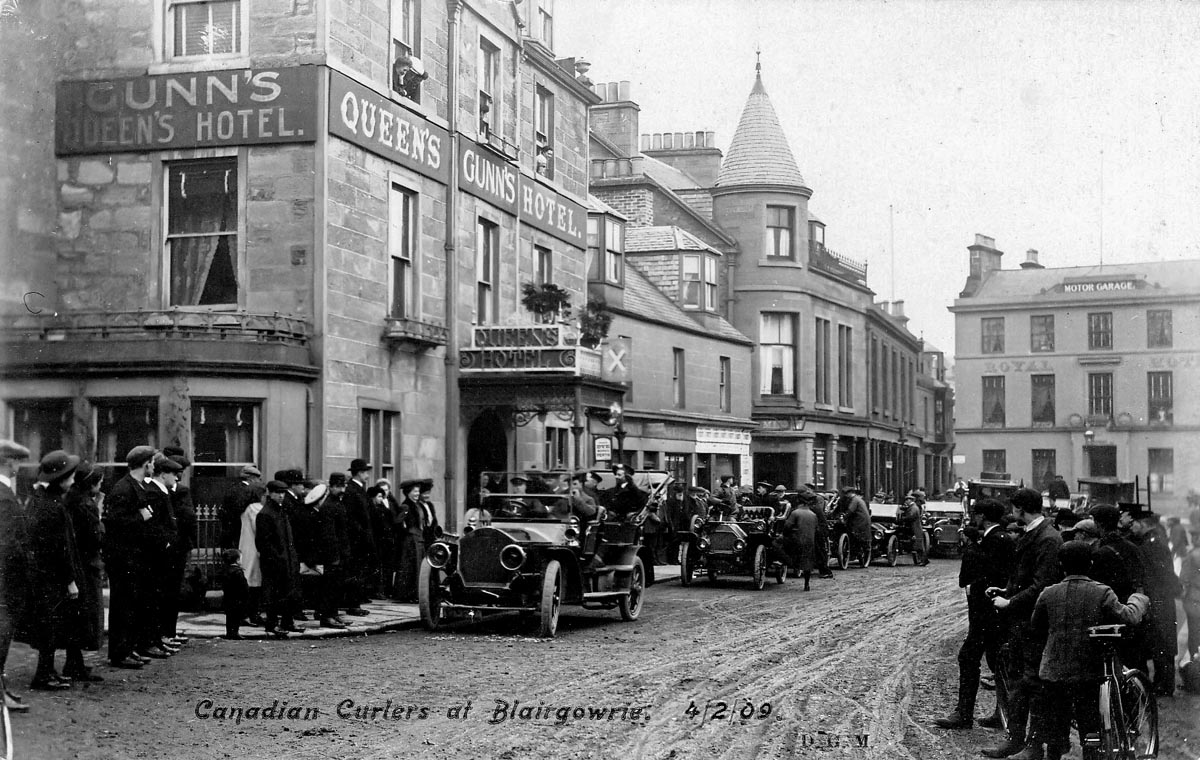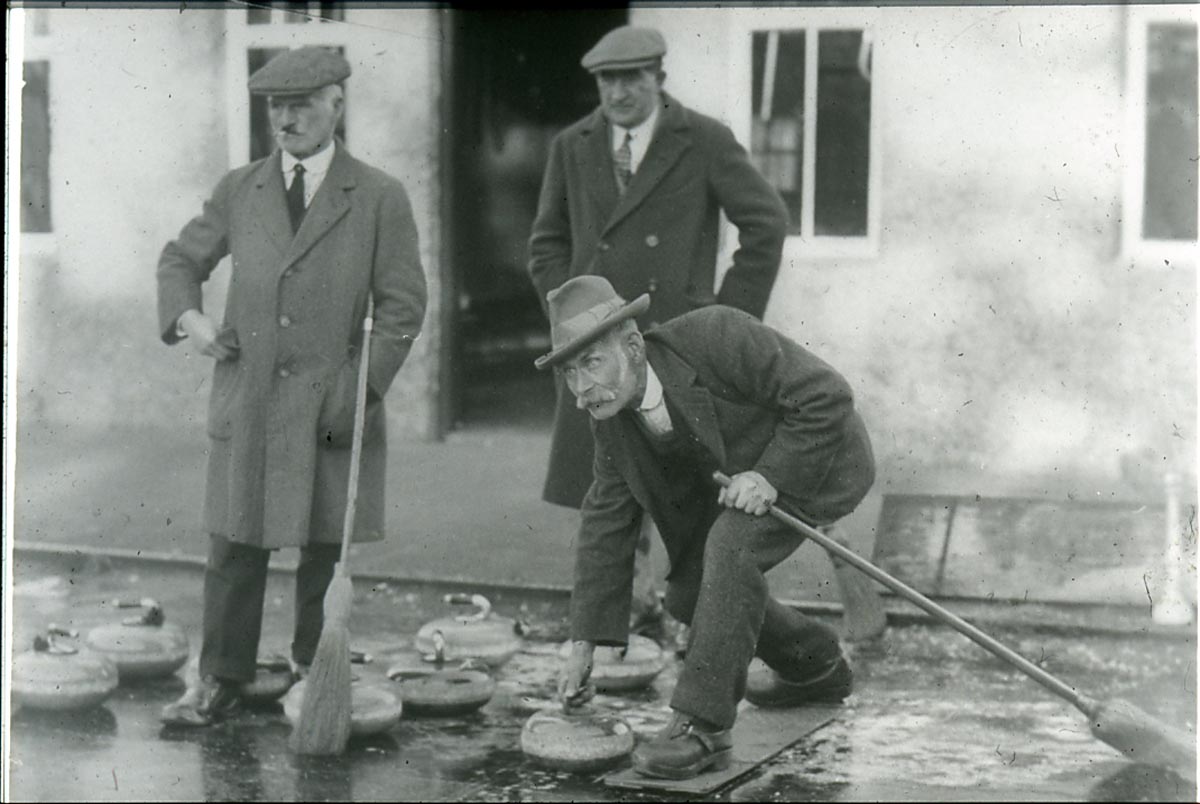Our Heritage Timeline
Curling

Curling
The Missing Curling Stone
CURLING is a Winter sport which originated in Scotland and can be traced back to the Middle Ages. The oldest curling stone dates from 1511 and is in the Stirling Smith Museum. Scottish emigrants took the game to other countries, and curling is particularly popular in Canada.
THE SILVER CURLING STONE was gifted to the Parish of Rattray at the same time as the other two trophies (the Silver Arrow and the Silver Ball). It is thought that, many years ago, the winners of this trophy failed to return it, and, to this day, it remains missing.
Curling is known as The Roaring Game due to the sound made by the curling stones as they glide over the ice. Early records of the Blairgowrie Curling Club have been lost, but surviving records date from 1783. The first entry in Rattray Curling Club’s minutes book is dated 10 January 1844.

Most of the neighbouring communities like Ardblair, Spittalfield, Meikleour, Alyth, Coupar Angus etc all had Curling Clubs. Curling was played on many of the lochs in Blairgowrie, Rattray and District when they froze over in Winter, including Stormont Loch, Marlee Loch, the Lochy, and Rae Loch.
When the railway line between Coupar Angus and Blairgowrie was constructed in 1855, a special halt for curlers was built at Stormont Loch.

John A.R. Macdonald in ‘The History of Blairgowrie (Town, Parish, and District)' quotes from The London Standard of Wednesday, 6 October 1883: “Blairgowrie is not in itself one of the most notable of Scottish towns, but it possesses a famous Curling Club, and this Club, in second century of its existence. Long before Sir Walter Scott had discovered the Highlands – when the Celt in a kilt was considered as equivalent to a cattle thief, and when not one Englishman out of fifty thousand had ever heard the name of the place – the Perthshire villagers resolved to form a Club for the better pursuit of what Burns long afterwards designated ‘the roaring game.’ And ever since, so long as there was ice enough, the weavers of the Ericht braes have continued to play ‘bonspiels’ and add to their fame by feats of ‘inringing’ and ‘rebutting'.

In these days of ephemeral associations, which are no sooner formed than they begin to wane, the fact of a remote Scottish town being able to keep alive a curling meeting for more than a century speaks well for the good fellowship of the burghers.”
Early curling stones were taken from the River Ericht, and these were prized possessions. Some even had names. In his book ‘The History of Blairgowrie ( Town, Parish, and District) John A. R. Macdonald gives details of five old Blairgowrie stones:
The Soo 16.5 x 11 inches (419 x 280 mm) 79lb (36kg)
The Baron 14.5 x 14 inches (368 x 356 mm) 88lb (40 kg)
The Egg 17 x 12 inches (431 x 300 mm) 115lb (52 kg)
The Fluke 12.5 x 11 inches (318 x 280 mm) 52lb (24 kg)
Robbie Dow 9 x 9 inches (229 x 229 mm) 34lb (15 kg)
“The Egg” is in the Scottish Curling Trust’s collection. Nowadays, curling stones are made from granite quarried on Ailsa Craig, an uninhabited island off the west coast of Scotland.
Read more at:
https://www.discoverblairgowrie.co.uk/blairgowrie-and-rattray-community-groups/rattray-curling-club
https://www.kayscurling.com/ailsa-craig-granite
https://www.scottishcurlingtrust.org
For the story of The Curlers’ Dinner read “The Ghost O’ Mause” by Maurice Fleming.
For a picture of the 5 Blairgowrie stones go to https://curlinghistory.blogspot.com/2016/09
“A Thunnerin Cast -Double Century of Blairgowrie Curling Club 1783 – 1983” by Elizabeth H.Scott published by James Norrie Ltd. 39 High Street, Kirriemuir is available for Reference at A.K.Bell Library, Perth.
The Laing Collection at Perth Museum and Art Gallery includes photographs of Curling on local lochs.
This is one of the three Rattray Trophies which can be found here.
Previous Page
